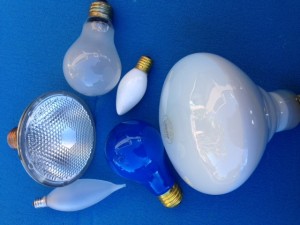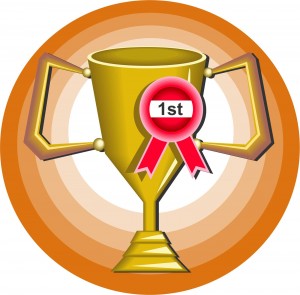I’ve been busy blogging on the UpGlobal site about Santa Barbara Startup Weekend #4, which was held Nov 14-16, 2014. To catch up on how the weekend went and see the list of winning teams, visit Ron’s UP Global Blog Page.
Monthly Archives: November 2014
Creating Innovation
 While the media likes to tell the story of the “inspired” lone entrepreneur who had a great idea that magically changed the world or caused a huge new company to sprout from nothing this is the rare exception and you are often not hearing the full story. Real innovation takes work. You need to be open to opportunities, look for them in the right places, and exploit them when they arrive.
While the media likes to tell the story of the “inspired” lone entrepreneur who had a great idea that magically changed the world or caused a huge new company to sprout from nothing this is the rare exception and you are often not hearing the full story. Real innovation takes work. You need to be open to opportunities, look for them in the right places, and exploit them when they arrive.
Sure, many people thought about the concept of an Internet search engine, or a social network, or a new type of can opener or mouse trap, but did they explore, test, refine, and develop the idea, or did they forget about it as soon as they left the shower?
In this post, I explore some of the many ways in which you can identify those innovative opportunities. In the future I’ll address exploiting them.
Unexpected Success
 A great opportunity, especially for existing companies that have fielded products, is the unexpected success. Often companies focus on what is failing and put all of their energy into those problems, but they neglect what is succeeding better than expected. If a particular product or service is succeeding better than expected then it is important to explore what opportunity that might be revealing.
A great opportunity, especially for existing companies that have fielded products, is the unexpected success. Often companies focus on what is failing and put all of their energy into those problems, but they neglect what is succeeding better than expected. If a particular product or service is succeeding better than expected then it is important to explore what opportunity that might be revealing.
Just as you can have better human resource success by exploiting and expanding on the strengths of your employees rather than focusing on the weaknesses of each employee, similarly a company should explore product successes and exploit those further. There is more opportunity in turning a successful product into a breakout product than in turning a failing product into an okay product.
Misalignments
 A misalignment is when the expectations and assumptions about the world or a market do not match up to the reality of that world or market. An example of this is the “bubble”. In this case, the assumption is a very high expectation mixed with a low reality resulting in over-valuation. The opportunity is to bet against the bubble.
A misalignment is when the expectations and assumptions about the world or a market do not match up to the reality of that world or market. An example of this is the “bubble”. In this case, the assumption is a very high expectation mixed with a low reality resulting in over-valuation. The opportunity is to bet against the bubble.
In addition, any situation where you find that the conventional wisdom does not align with reality provides an opportunity. An example of this is where the major airlines assumed that a hub and spoke system could save money and provide flexibility until low cost airlines came in with direct routes and took away profitable segments of their business.
Cross-Pollination
 Cross pollination is moving a technology or a concept from one area into a completely different area, or mixing two disparate fields that have not been combined before. An example of this is Barack Obama’s success in using technology, social media, and big data analysis in politics for his successful 2008 presidential bid. GMO food is another example of two separate disciplines – genetics and food production – being combined.
Cross pollination is moving a technology or a concept from one area into a completely different area, or mixing two disparate fields that have not been combined before. An example of this is Barack Obama’s success in using technology, social media, and big data analysis in politics for his successful 2008 presidential bid. GMO food is another example of two separate disciplines – genetics and food production – being combined.
Demographics and Social Change
 An area which is often neglected by entrepreneurs is the area of demographics, which is unfortunate since this area leads to some very predictable opportunities. What opportunities do the Baby Boomers present? How about the Millennials? Predicting what these groups will need at each stage of their lives is not rocket science. And there are plenty of opportunities here to exploit.
An area which is often neglected by entrepreneurs is the area of demographics, which is unfortunate since this area leads to some very predictable opportunities. What opportunities do the Baby Boomers present? How about the Millennials? Predicting what these groups will need at each stage of their lives is not rocket science. And there are plenty of opportunities here to exploit.
Also keep in mind major social or technology adoption changes. Consider the impact of the growth of the Internet, or the adoption of mobile phone technology, or the growing field of the Internet of Things. Each of these social discontinuities provides opportunities and threats to a broad range of markets and industries. In particular, early on in the adoption cycle of these technologies the opportunity is greatest and, of course, the risk is highest.
Conclusion
 Opportunity is all around you. Keep track of the ideas you come up with or those that you find in magazines or newspapers, or talking to clients, vendors, or friends. Once you have a list of innovation opportunities, you can evaluate which one is the best fit for you and your skill set, and that you are able to exploit. More next time on how to make use of your innovation ideas.
Opportunity is all around you. Keep track of the ideas you come up with or those that you find in magazines or newspapers, or talking to clients, vendors, or friends. Once you have a list of innovation opportunities, you can evaluate which one is the best fit for you and your skill set, and that you are able to exploit. More next time on how to make use of your innovation ideas.
The Winning Startup Weekend Presentation
Do you want to win Startup Weekend? The secret to a winning presentation is not what you may think.
 You may be in a strong active startup community, like we have in Santa Barbara, where over two dozen “been there done that” mentors are guiding 20+ teams through market validation, customer acquisition, design, and product development. If you are one of the 75+ pitches that the crowd selected to become a team, then you are likely to excel out of the gate in one or more of these areas. So, you have strong competition and the judges will have their work cut out for them deciding who should win the top prizes.
You may be in a strong active startup community, like we have in Santa Barbara, where over two dozen “been there done that” mentors are guiding 20+ teams through market validation, customer acquisition, design, and product development. If you are one of the 75+ pitches that the crowd selected to become a team, then you are likely to excel out of the gate in one or more of these areas. So, you have strong competition and the judges will have their work cut out for them deciding who should win the top prizes.
First, make sure you cover all the basics:
Team
- You need a strong and diverse team that knows design, product development, and marketing.
- Actively build your team during the networking phase before the pitches start. Come in knowing what skills you need and start recruiting early.
Market
- You need to do solid market validation. 54 hours is plenty of time for a pivot or two if the market is not what you thought. Pivot early if it looks like the market isn’t what you expected.
Model
- You need to show you can make money.
- It is great if you have initial customer names and emails who are signed up for your product or service. It is better if you’ve actually taken pre-payment for delivery or have a signed contract. Yes, teams actually do manage to do these things in 54 hours during the weekend.
Design
- You need solid design, but only on what you are presenting. This is key. If you are going to present a web site or app, that needs to look good. If you are going to present physical product or a prototype visual, those need to look good. If you are not going to be presenting it, don’t waste time designing it. Instead put your design energies into designing your presentation.
Product
- No, you do not need a working product. This is not a hack-a-thon. This is startup weekend.
- If you have development-only team members and building a working product won’t take away from other things, then great, build something that works. You’ll get extra credit for that.
- Otherwise, build only enough to do a demo. Yes, PowerPoint is fine. Yes, a “product” with “imagined or fake” functionality is fine. Don’t pretend that you built more than you did, but show what the user experience will be. People are awarding the vision, not how much code you can hack in 54 hours.
The Presentation
Start thinking about your presentation Saturday and take your first hack at what it will look like. Plan on redoing your presentation at least five times before Sunday evening. When we won startup weekend two years ago, we had gone through almost a dozen revisions of our presentation before we had our final pitch ready.
Practice, practice, practice. You have mentors. Use them. Run through your presentation to the mentors. Listen for their feedback and revise, revise, revise.
Five-minutes is a lot of time if you use it wisely. It is very short if you waste it. What can you do to maximize your use of the time? Especially if you want to demo a product, you don’t want to waste time clicking around and typing things in during your precious time. Consider pre-recording a video of your demo. This gets you the best possible demo using the shortest possible amount of your five minutes. It also gives you flexibility on how you show users interacting with your product.
But the key thing that will drive you up to the top slot … Connect with your audience and judges on a deep, emotional level. The judges should feel like this is a product that is meaningful to them or is something they personally want to use or see developed. Show the impact of your product on people and how it solves their needs. Give testimonials of future clients who really want to have your product.
Below is the final presentation of the Santa Barbara Startup Weekend first place team. See how this impacts you personally on an emotional level:
On the flip side, should winning Startup Weekend be your goal of joining Startup Weekend. I argue in a different post that there are things more important than winning.